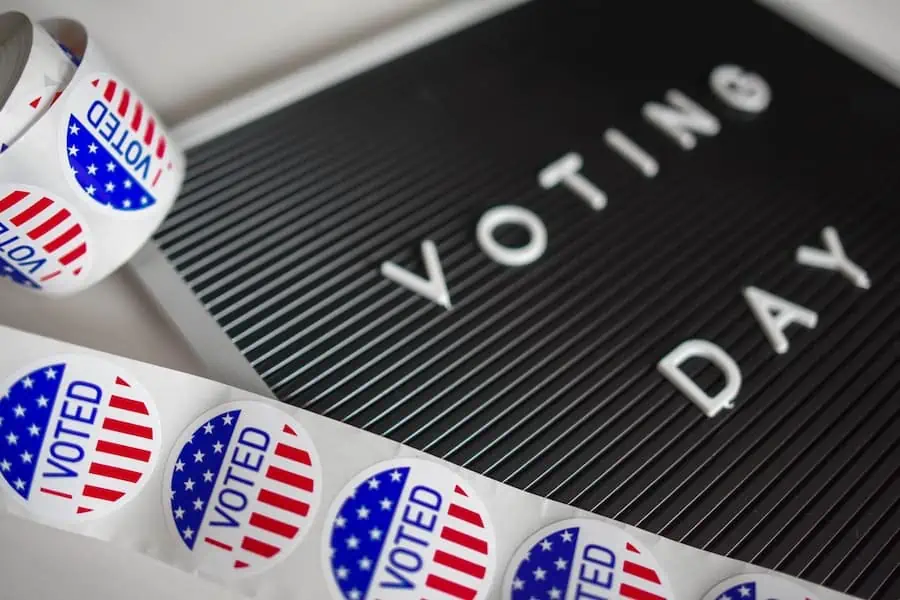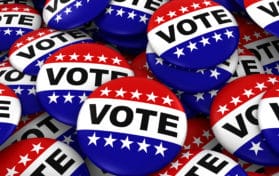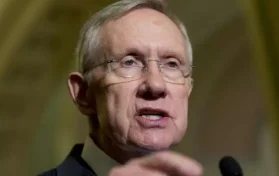
Elections are how many countries, states, counties, and cities choose their leaders by voting for candidates. Typically associated with democracy, some countries that do not adhere to the democratic system still allow elections.
Elections are not only to choose who will govern but also specific rules, policies, amendments, and laws. Politicians often belong to one ideological political party with whom they align their policies. The two primary parties in the U.S. are Democratic and Republican. Some political candidates run as Independents or as members of smaller parties.
During an election, voters fill out a ballot to cast their votes. Every state has rules regarding who qualifies to vote, and registration is required before the election.
Not all elections are for government officials and laws. Organizations, associations, clubs, and other groups may also have officers that require voting. Additionally, the organization’s bylaws may require amending or other changes requiring a vote by the members.
The primary functions of elections include the following:
- Enabling voters to choose their leaders and have a say by their vote in the coming year(s).
- Ensuring government stability
- Facilitating political and social integration
- Holding elected officials accountable for their performance (or they could be voted out of office at the next election)
- Providing political education for the citizens
- Ensuring the responsiveness of the government to the will of the people
- Legitimizing the actions of people in office
- Allowing people to determine which referendums and initiatives they want to see in their locations
Types Of Elections
Every country has its electoral procedures, and the ones listed here below are some of the leading types of elections in the U.S.:
General Elections
Held once every four years, on the Tuesday following the first Monday in November, a general election is when the American people choose their president for the coming four years. The general election occurs in even-numbered years and includes additional races, as highlighted below.
Midterm Elections
Although not as popular with voters as presidential elections, midterms are vital to our country’s direction as they determine the entire makeup of the U.S. House of Representatives and one-third of the 100 seats in the U.S. Senate. Representatives serve for two-year terms, and senators serve for six years, with staggered terms.
State and Local Elections
Often held on the same day as national elections to maximize voter turnout, state and local elections can occur any time of the year. These elections are for state legislators (senators and representatives), governors, commissioners, other state-wide offices, judges, mayors, county and local officials, and any referendums applying to that location.
Municipal Elections
Unlike other state and local elections, municipal elections focus solely on their municipalities. These elections can occur at any time, including in odd-numbered years, and include offices such as the mayor, city or town council, sheriff, and other local elected officials.
Primary Elections
Because multiple candidates in the same party often run for the same office, that party’s voters need to choose one candidate. Only voters registered with a particular party can vote for a candidate in their party’s primary. During primary elections, there may also be additional ballot questions and constitutional amendments that everyone can vote on, along with other contests that do not require partisan voting.
Importance of elections:
- Democracy system: elections ensure that every person eligible to vote has a say in how their city, county, state, and country are run. Every vote counts, as some races are won or lost by only a few votes.
- Voting is one of the fundamental freedoms and rights: the right to vote was hard-fought for many people. It is a right of freedom.
- Be part of society: elections bring people together through socializing, sharing ideas, and communication. Not everyone feels comfortable with this process, especially when dealing with emotional problems such as anxiety or depression. Hormones such as HGH play an essential role in our mental stability. It is vital to be aware of HGH side effects to ensure proper treatment and positive results.
- Tool for improving country life: choosing a candidate you believe will make a difference in your life is essential. Politicians shape the world we live in with the decisions they make.
- Opportunity of expressing your trust and choice: when you vote, you select the candidate you feel most closely aligns with your thoughts, beliefs, and goals. You put your faith in your candidate to make the best decisions.
- Elections have consequences: not exercising your right to vote means you have chosen not to have a say in how you will be governed. All people must live with the consequences of an election outcome, good or bad.
- Money: the outcome of an election can affect your taxes and where your tax dollars go. Some ballets contain resolutions on specific propositions and ballot measures that can benefit our lives or increase our taxes. It is also crucial to elect individuals into leadership positions that commit to supporting key social services in our communities.
Percentage Of Voters In Recent Years
In recent years, the percentage of voters in the U.S. has risen, yet it does not come close to election outcomes in other countries. One reason for that is in the U.S., voter participation in elections is voluntary – no laws require people to vote or even to register to vote. That is the opposite of some countries, such as Argentina, Australia, Belgium, Bolivia, Brazil, Ecuador, Liechtenstein, Luxembourg, Nauru, Peru, Samoa, Singapore, Switzerland, Turkey, and Uruguay, which have compulsory voting that is in some way enforced. Other countries have compulsory voting that is not enforced.
Reviewing data from 203 countries, there are 27 with compulsory voting, 172 with non-compulsory voting, and 4 without elections. Countries with compulsory voting see voter turnout around 90%.
Depending on the country, non-voters can receive fines, sanctions, civil rights infringements, disenfranchisement, imprisonment, or even difficulty obtaining a job or child services.
According to the U.S. Census Bureau, 66.8% of the eligible voting population in the United States voted in the 2020 presidential election, the highest percentage since 1932 based on available data. The only other times that percentages topped 60% were in 2008, 2004 (barely), 1968, 1964, 1960, and 1952.
There is also a difference between the voting-age population (all residents of voting age) and the voting-eligible population (all residents of voting age minus felons, mentally incapacitated citizens, and non-citizens). Voting-eligible numbers have only been tracked since 1980. The early percentages were of the entire voting-age population.
One interesting fact in the U.S. is that female voter turnout has surpassed male voters in all general presidential elections since 1980. Individuals with higher education and incomes were likelier to vote than those with less education or lower incomes.
Conclusion
Voting in elections is a right to exercise to ensure your wishes are heard by the politicians making choices about what will govern your life. Exercising the right to vote is a leading benchmark of democracy.
In the 2020 presidential election, Minnesota, Colorado, Maine, Wisconsin, and Washington had the highest voter turnout, over 75% each. Oklahoma, Arkansas, Hawaii, West Virginia, and Tennessee were the lowest, with less than 60% each.
Long lines at some polls make it difficult for individuals with health concerns or mobility issues. Vote-by-mail and early voting options can help, as can taking every precaution to ensure you are physically able to maintain your right to vote.





